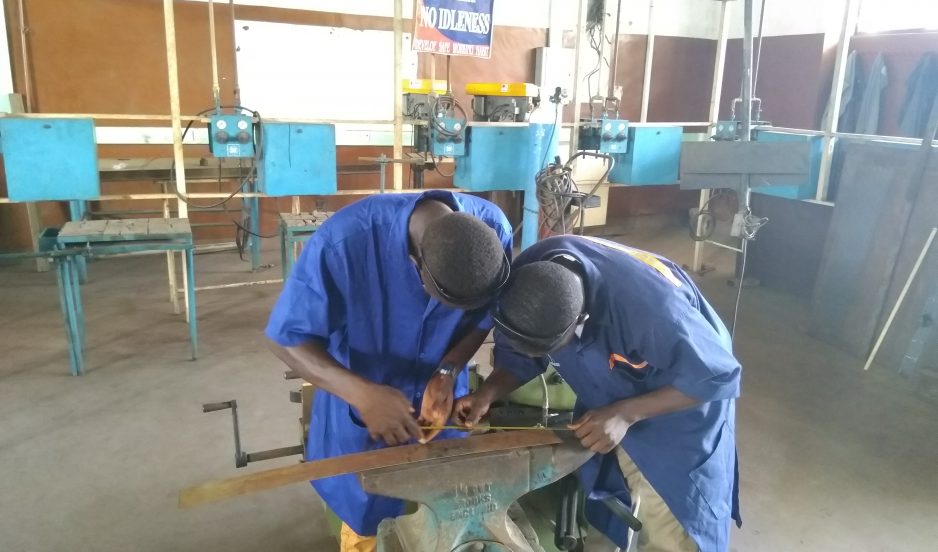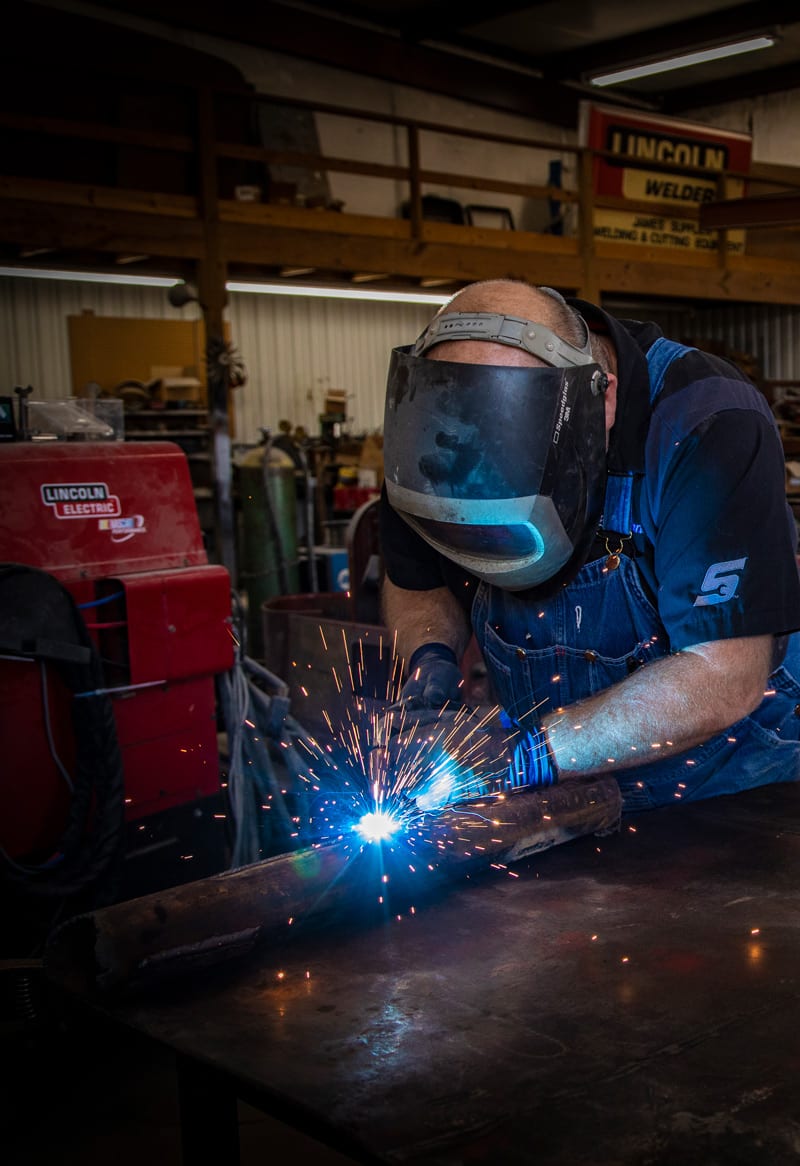Common Welding Repair Issues and Just How to Address Them Successfully
Welding repairs typically run into an array of issues that can jeopardize the honesty of the last product. Common problems consist of inadequate penetration, porosity, and misalignment, among others. Each problem presents distinct difficulties that call for specific approaches for resolution. Recognizing these concerns is necessary for welders intending to boost their outcomes and abilities. This conversation will certainly discover these usual welding repair service problems and reliable methods to resolve them.
Poor Penetration
Poor infiltration happens when the weld steel stops working to completely fuse with the base product, resulting in weak joints and prospective architectural failures. This problem often comes from inadequate warmth input, wrong electrode angle, or incorrect welding speed. Welders might encounter inadequate infiltration as a result of a mistake of the essential criteria for a certain material thickness or kind. Furthermore, contamination on the base product's surface can impede efficient bonding, exacerbating the trouble. To resolve insufficient penetration, welders must assure suitable setups on their tools and preserve a tidy job surface. Normal evaluation of welds is suggested to recognize any shortages early, enabling prompt corrections and the prevention of endangered structural stability in welded assemblies.
Porosity
Porosity is a typical issue in bonded joints that manifests as little gas bubbles caught within the weld steel. This defect can endanger the honesty of the weld, resulting in decreased stamina and potential failing under stress. Montana Mobile Welding and Repair Fabrication. Porosity usually develops from contamination, dampness, or inappropriate welding methods, which allow gases to run away right into the molten weld pool. To deal with porosity, welders ought to ensure appropriate surface area prep work, preserve a clean workplace, and utilize ideal welding criteria. In addition, picking the right filler product and securing gas can alleviate gas entrapment. Regular inspection and testing of welds can aid recognize porosity early, ensuring timely restorative actions are taken, thereby maintaining the high quality and reliability of the welded framework
Misalignment
Misalignment in welding can develop from different elements, including improper configuration and thermal expansion. Recognizing the source is crucial for efficient resolution. Several improvement strategies are available to straighten elements and assure architectural stability.
Reasons of Imbalance
Welding imbalance often stems from a variety of underlying issues that can compromise architectural stability. One key reason is inappropriate fit-up of components before welding, which can bring about spaces and uneven surface areas. Variations in thermal development during the welding procedure can likewise lead to distortion, especially if the materials being joined have different coefficients of growth. In addition, inadequate fixturing and securing might fall short to hold elements safely in area, bring about movement during welding. Badly maintained equipment, including welding devices and devices, might present variances in the weld grain, further adding to imbalance. Finally, driver error, stemming from not enough training or experience, can also play a substantial role in producing misaligned welds.
Modification Strategies Available
Addressing misalignment successfully requires a combination of restorative methods customized to the certain concerns at hand. One typical method is the use of fixtures or jigs to hold components in the correct placement during welding, ensuring constant alignment. Furthermore, pre-heating the materials can help in reducing distortion and improve fit-up. For substantial misalignment, mechanical realignment methods, such as making use of hydraulic jacks or clamps, can be utilized to correct the placement prior to welding. Post-weld heat treatment may additionally be essential to soothe tensions brought on by misalignment. Careful examination and modification during the setup stage can stop imbalance issues from becoming considerable troubles, advertising a smoother welding procedure and enhancing general architectural stability.
Distortion
Distortion is an usual obstacle in welding that can emerge from numerous elements, consisting of unequal heating & cooling. Recognizing the root causes of distortion is important for carrying out efficient prevention methods. Addressing this problem not only enhances architectural integrity but also improves the total top quality of the weld.
Root causes of Distortion
When subjected to the intense heat of welding, products often undergo modifications that can cause distortion. This sensation primarily occurs from thermal growth and contraction during the welding process. As the weld location warms up, the product increases; upon cooling, it acquires, which can create inner stresses. In enhancement, unequal home heating throughout a workpiece can worsen these tensions, causing bending or bending. The sort of material additionally plays a significant duty; metals with varying thermal conductivity and coefficients of growth may react in a different way, bring about uncertain distortions. Inadequate joint design and insufficient fixturing can add to misalignment during welding, increasing the possibility of distortion. Understanding these reasons is crucial for effective welding repair service visit the site and avoidance techniques.
Prevention Techniques
Efficient prevention strategies for distortion during welding concentrate on controlling warm input and making certain proper joint style. Keeping a consistent heat input assists to lessen thermal development and contraction, which can lead to distortion. Making use of strategies such as pre-heating the work surface can also reduce the temperature gradient, advertising uniform heating. Furthermore, picking proper joint styles, such as T-joints or lap joints, can enhance stability and decrease stress and anxiety concentrations. Executing proper fixturing to secure the workpieces in position further aids in preserving alignment during the welding process. Staggered welding series can disperse warmth a lot more evenly, protecting against local distortion. By applying these approaches, welders can greatly decrease the possibility of distortion and enhance the total high quality of their welds.
Splitting
Cracking is a typical problem encountered in welding repair services, frequently arising from various aspects such as incorrect cooling prices, product option, or insufficient joint preparation. The occurrence of splits can greatly jeopardize the stability of the weld, resulting in prospective failures throughout procedure. To resolve this concern, welders should first assess the root creates, making certain that materials work and appropriately picked for the particular application. In addition, managing the air conditioning rate during the welding procedure is important; quick cooling can induce stress and lead to fracturing. Proper joint design and prep work additionally add to minimizing the risk. Implementing these strategies can boost weld top quality and sturdiness, eventually reducing the probability of fracturing in finished weldments.

Insufficient Combination
A significant concern in welding fixings is insufficient combination, which takes place when the weld steel does not adequately bond with the base material or thermal welding previous weld passes - Fabrication. This issue can result in weaknesses in the joint, possibly endangering the honesty of the bonded framework. Elements adding to incomplete combination include insufficient warmth input, improper welding strategy, and contamination of the surfaces being signed up with. To address this problem properly, welders need to ensure proper pre-weld cleaning and surface area prep work, in addition to change their welding specifications to accomplish ample infiltration and blend. Routine inspection throughout the welding process can additionally assist recognize incomplete blend early, permitting for timely corrective steps to enhance the overall top quality of the weld
Overheating
While welding fixings can improve structural stability, overheating offers a substantial challenge that can result in product degradation. Excessive heat during welding can change the mechanical buildings of metals, leading to minimized strength, raised brittleness, and warping. This sensation is particularly vital in high-stress applications where structural dependability is vital. Recognizing getting too hot can entail aesthetic examinations for staining or distortion, in addition to checking temperature level throughout the welding process. To reduce the dangers connected with overheating, welders should employ suitable methods, such as controlling heat input, adjusting travel rate, and using appropriate filler materials. Additionally, applying pre- and post-weld warm treatments can assist recover product residential or commercial properties and boost the overall quality of the repair service, making sure long-lasting efficiency and safety and security.
Regularly Asked Concerns
What Are the Usual Signs of a Welding Flaw?

Just How Can I Examine My Welds for Quality?
To examine welds for quality, one can go to my site utilize visual examinations, ultrasonic screening, and radiographic approaches. Each technique guarantees structural honesty, determines flaws, and validates adherence to defined criteria, ultimately boosting the dependability of the welded joints.
What Security Safety Measures Should I Take While Welding?
When welding, one must focus on safety and security by using proper individual safety devices, making sure correct air flow, protecting flammable products away, maintaining a tidy office, and knowing surroundings to avoid injuries and accidents.
Can I Fix a Weld Without Renovating the Entire Joint?
Repairing a weld without redesigning the entire joint is feasible, depending upon the damage (Montana Mobile Welding and Repair). Methods such as grinding, adding filler product, or making use of a welding process can effectively deal with specific imperfections while preserving the surrounding framework
What Devices Are Necessary for Effective Welding Services?
Vital devices for effective welding repair work consist of a welding equipment, cable brush, mill, protective gear, clamps, and filler products. Each tool plays a vital function in making sure quality and safety and security throughout the repair work procedure. Porosity generally emerges from contamination, moisture, or incorrect welding strategies, which permit gases to leave into the molten weld swimming pool. Poorly conserved equipment, including welding makers and devices, might introduce variances in the weld grain, further contributing to imbalance. When subjected to the extreme heat of welding, products typically undergo adjustments that can lead to distortion. Breaking is a typical issue encountered in welding repair services, typically resulting from numerous aspects such as inappropriate cooling rates, product choice, or poor joint preparation. A considerable concern in welding repairs is incomplete combination, which happens when the weld steel does not adequately bond with the base material or previous weld passes.